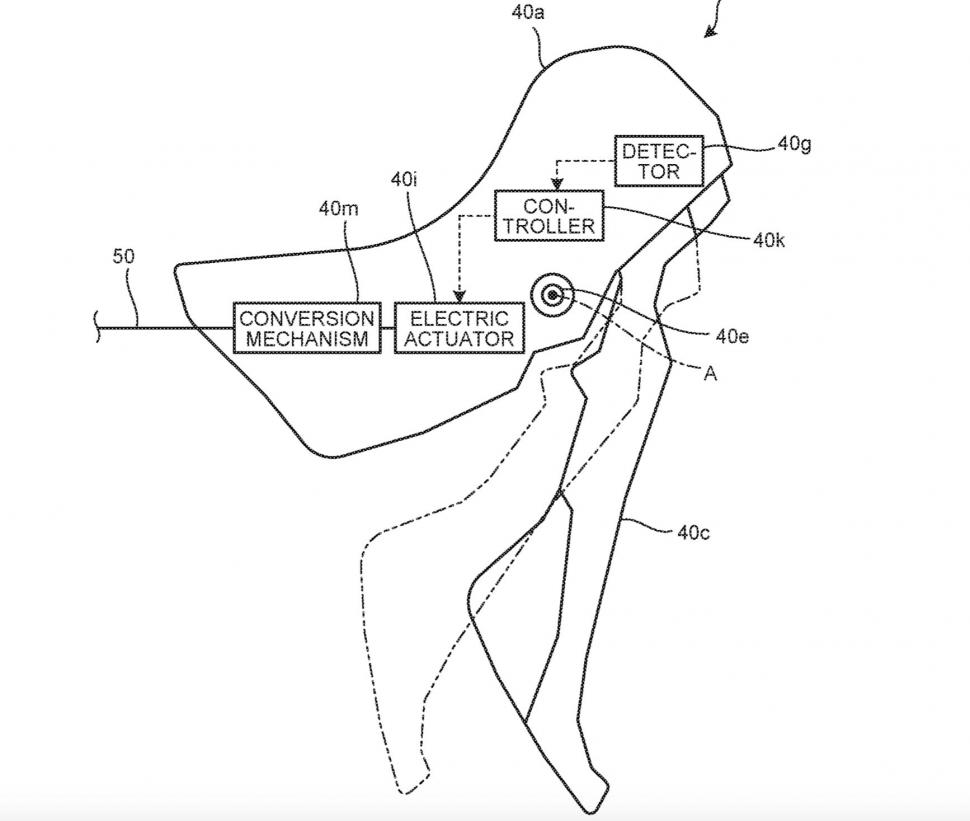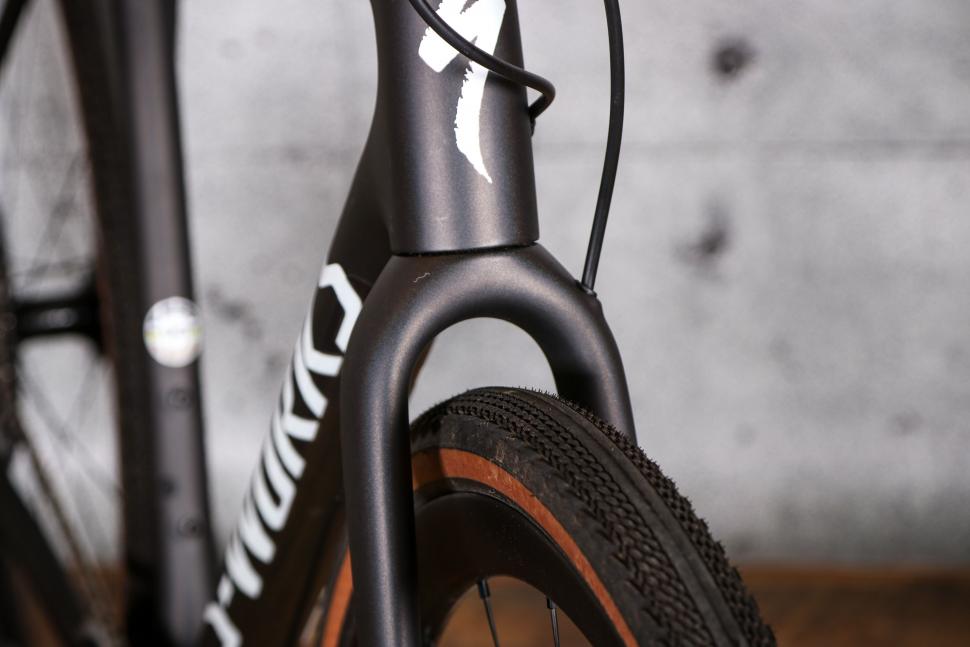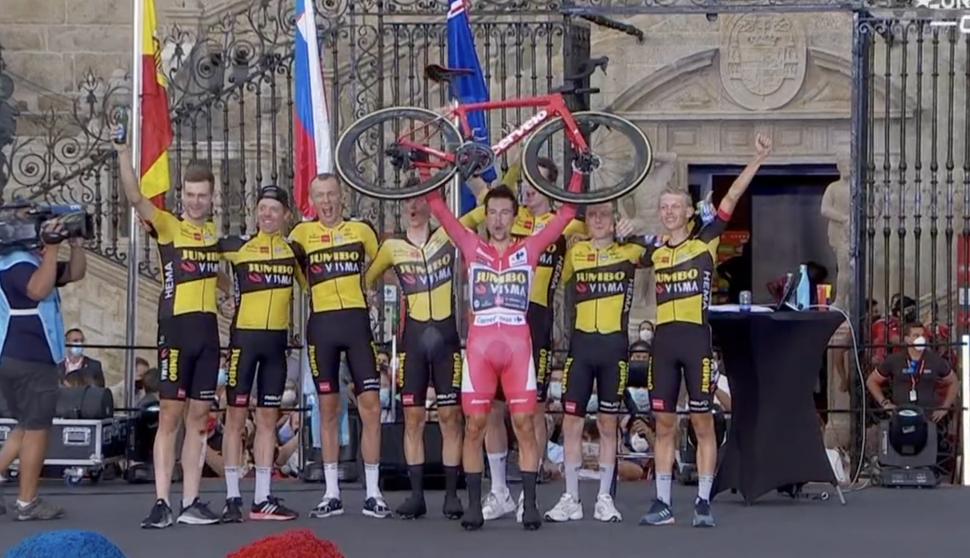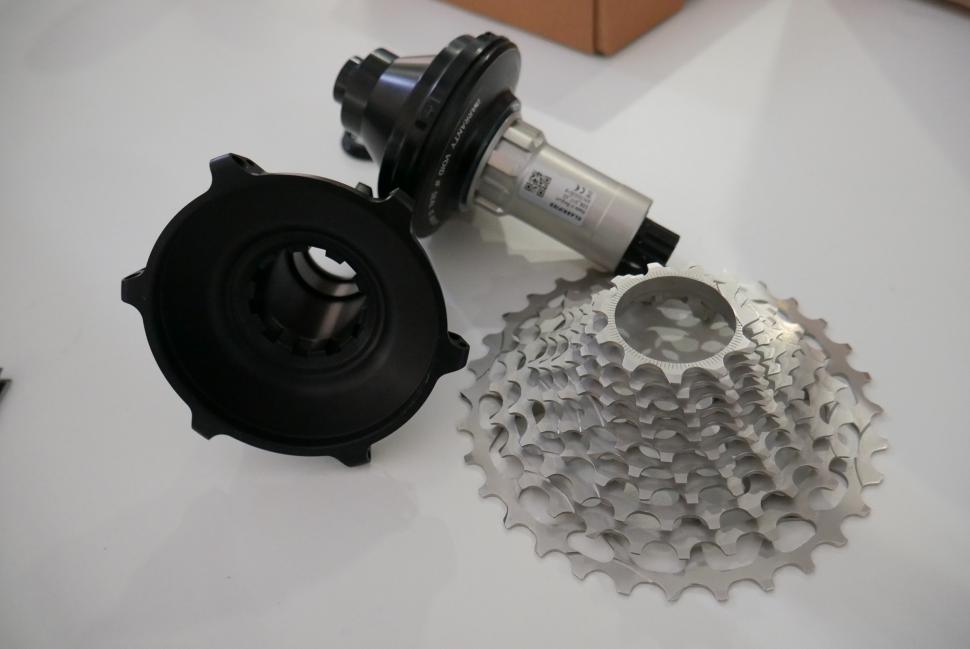- News
- Reviews
- Bikes
- Components
- Bar tape & grips
- Bottom brackets
- Brake & gear cables
- Brake & STI levers
- Brake pads & spares
- Brakes
- Cassettes & freewheels
- Chains
- Chainsets & chainrings
- Derailleurs - front
- Derailleurs - rear
- Forks
- Gear levers & shifters
- Groupsets
- Handlebars & extensions
- Headsets
- Hubs
- Inner tubes
- Pedals
- Quick releases & skewers
- Saddles
- Seatposts
- Stems
- Wheels
- Tyres
- Tubeless valves
- Accessories
- Accessories - misc
- Computer mounts
- Bags
- Bar ends
- Bike bags & cases
- Bottle cages
- Bottles
- Cameras
- Car racks
- Child seats
- Computers
- Glasses
- GPS units
- Helmets
- Lights - front
- Lights - rear
- Lights - sets
- Locks
- Mirrors
- Mudguards
- Racks
- Pumps & CO2 inflators
- Puncture kits
- Reflectives
- Smart watches
- Stands and racks
- Trailers
- Clothing
- Health, fitness and nutrition
- Tools and workshop
- Miscellaneous
- Buyers Guides
- Features
- Forum
- Recommends
- Podcast
feature
Check out the big bike trends coming your way in 2022
Here are the big tech trends we expect to hit the cycling world over the coming year, as well as other stuff that we’d love to see make it on to the shelves. It has to be said, some of the things on our wish list at road.cc seem far more likely than others, but that won’t stop us from dreaming!
Electronic brakes
This first one might be a bit 'out there' but surely electronic brakes are going to be a thing at some point? Okay, it does seem a bit unlikely that they'll arrive in 2022 but electronic gear shifting has now been mainstream for over a decade and the fact that Shimano patented some brake-by-wire tech back in May 2021 has only added fuel to the fire.
> Shimano patents electronic brake system
Electronic brakes are most likely to be seen on disc brake bikes and have the potential to save a whole heap of weight by getting rid of the hydraulic fluid. It would also likely mean that shifters could be made a lot smaller without the need for a reservoir and the hoses could be replaced with much thinner and lighter cables or maybe even be wireless like SRAM eTap shifting. That really would make building a new bike easy!
Whatever the solution, we think we’ll be letting someone else do the testing first because a dead battery does raise quite a few safety concerns and could fast track brown shorts back into fashion. That said, there are now plenty of cars using similar systems and some people apparently like brown shorts.
Likeliness rating: 1%
A calming of the endless integration
Next up is another wish but definitely something that seems more likely than the last. We’d love to see at least a few bikes left with a tiny bit of cable showing rather than the fully integrated affairs we saw released in 2021.
It does seem that in the last few years there’s been a vendetta against visible cables. Yes, hidden cables looks very nice and yes, it saves you a minuscule amount of watts but it does add to the hassle. Many of us aren’t interested in those fractions of a second that the aero gains can bring but mind a lot more when it comes to servicing a fully integrated bike and spending hours toiling away in the garage with a magnet and a stick.
> The case of the disappearing cables on Tour de France race bikes
We love the integrated look for race bikes, but for a commuter/winter bike or anything for going off-road we just don’t think it’s worth the added hassle. We’re not asking the bike industry to stop integrating everything, just to maybe ease off compared to the last few years and leave us a few bikes in the range that are easier to service.
Likeliness rating: 60%
The full death of separate aero and lightweight race bikes
Argon 18 recently announced Sum and Sum Pro which are said to be both lightweight and aero, killing off the Nitrogen and Gallium. We've already seen this with SL7, Emonda, and other do-it-all race bikes but surely no one will be launching separate aero and lightweight bikes in 2022? Anyone launching an aero bike that isn't light would have to be mad.
Merida is one of the big brands to still offer an aero bike and a lightweight bike, though we have seen the lightweight Scultura get a bit more aero with each iteration. Will they merge the two models, or come up with a brand new bike? Time will tell.
Likeliness rating: 80%
More cyclocross bikes with wide clearances
Wider tyres and big clearances on frames isn't a new trend – we’ve seen it happening on road bikes and gravel bikes for ages – but cyclocross bikes seem to be a little slower in their uptake.
> First Ride Review: 2022 Specialized S-Works Crux gravel bike
This is likely because riders in UCI races are limited to 33mm tyres. However, very few of us are pros so it makes sense to make bikes that are capable of taking fatter rubber as well.
The good news is that some brands are looking at their current cyclocross bike and seeing it as a way to make a fast gravel race bike simply by increasing that tyre clearance.
We have seen this trend starting already with the releases of the 2022 Specialized Crux and the new Cannondale cyclocross bikes as well. We think that this blurring of lines between cyclocross and gravel bikes seems like only a good thing and could give us more choice for versatility.
As a keen cyclocross racer, this is a trend I am fully behind. I usually race on 33mm tyres and extra tyre clearance would mean less chance of the bike getting clogged up with mud, and as a privateer racer that doesn’t have a spare bike in the pits, that means the bike should be working at the back end of the race.
> Cannondale unveils cyclocross and gravel versions of SuperSix EVO
We'd like to then see space for tyres up to about 45mm wide so that we can dabble in some rocky stuff without needing to fork out on and store a gravel or mountain bike. Okay, it will have a negative effect on the geometry from a purely cyclocross standpoint, but that’s a sacrifice we are willing to make.
Likeliness rating: 85%
A focus on affordable road bikes
As with any industry, prices can depend a lot on supply and demand. Over the last year we’ve seen lots of demand and not a lot of supply within the cycling industry and that’s sent prices of bikes skywards. In 2022, we really hope that we see some bargains appearing again and manufacturers focusing on affordability.
> 10 of the best road bikes around £1,000
Tying in with this, we might see the release of a new Shimano 105 groupset in the summer. It unlikely given the supply chain issues Shimano is having with the new versions of Dura-Ace and Ultegra, but you never know.
Shimano has told us on a few occasions that the precise shifting of Di2 won’t be trickling down to 105 level, but plans can change. We'd love to see Shimano 105 Di2, making electronic shifting more attainable than ever before, and we'd also love to see some new frames released to put it on.
Unfortunately, with transport still costing an absolute bomb, manufacturers are likely to keep cramming their shipping containers with expensive bikes which have a bigger profit margin, so don’t expect an influx of cheaper models any time soon.
Likeliness rating: 45%
All three Grand Tours won on disc brakes for the first time
2022 could be the first year that all three of the grand tours – that’s the Giro d’Italia, Tour de France and Vuelta a Espana – could be won on disc brakes.
> Ineos Grenadiers are racing on disc brakes… finally
Team Ineos’ announcement back in September certainly makes this more likely considering that they’ve won at least one Grand Tour each year since 2011, albeit many of them under the Team Sky name.
> Does the bike industry really want to force you on to disc brakes?
Rim brake lovers may get a few more days of glory, though, as we expect to see rim brakes being used on a few of the most mountainous days, just as Tadej Pogacar did this year on his way to Tour de France glory.
Likeliness rating: 25%
A boom in proper bikes for kids
We think 2022 could be the year that sees junior bikes garner plenty of attention. This means geometry suited to growing limbs and lightweight components that don’t need to withstand the same forces as those made for adults.
Canyon has recently released their Ultimate Young Hero with gearing tailored to younger racers and we don’t think it’ll be long before other brands follow suit. We were both surprised and impressed to see that the Canyon was actually cheaper than the comparable adult bike so this should help to reduce the barriers to competing.
Coming already specced with appropriately sized bars, cranks and gears legal for racing will mean there are fewer obstacles to overcome, especially for non-bike orientated parents.
Likeliness rating: 30%
Super-capacitors in bikes
Next up, we’re going full nerd. Electric bikes have come on a long way in recent years but they’re still a fair bit heavier than standard bikes as all that energy is stored in a fairly hefty battery. We reckon that we’re not far off seeing a bike fitted with a super-capacitor hitting production. We’re beginning to see them in flash cars and the eBike-arm of the cycling industry is quite forward-thinking. Well, it’s certainly better than the road bike section.
> 10 of the best electric road bikes
A super-capacitor has the advantage of being capable of charging and discharging really quickly. Think of a super-capacitor as a bucket and a battery as a watering can; they both hold the same amount of water but the bucket can be filled up and emptied much quicker. The same applies for energy.
A super-capacitor could be charged when riding along on short descents and then deployed for a burst of speed on a hill or for a sprint. Because you’d only need a relatively small one, it could save weight compared to a lithium-ion battery, making e-bikes sleeker and lighter.
Likeliness rating: 5%
More gravel suspension systems
The gravel bike sector is becoming ever more full of niches, and we expect that to continue.
We’ve seen some gravel bikes become more like mountain bikes with clearance for proper mud tyres and even models with suspension.
> SRAM, Zipp & RockShox launch new XPLR gravel components
For example, the Specialized Diverge has its Future Shock system, Canyon has released the Grizl with the 30mm Rockshox Rudy suspension front fork, and BMC has added hydraulic dampers to its URS gravel bike. We’re excited to see what different solutions manufacturers come up with in 2022, or whether anyone will put drop handlebars on a cross-country mountain bike (okay, mountain bike geometries make that unlikely).
What we can guarantee is that the gravel bike segment of the market is going to expand. Expect lots more bikes fitted with those Rockshox Rudys and we’re also keen to see what the pros will opt for in the first gravel world champs.
Likeliness rating: 90%
Au revoir, front derailleur
When Classified launched its 2-speed hub gear system for road bikes, they grabbed our attention. The system provides the possibility - for potentially no weight penalty - to move the functionality of the front derailleur into the rear wheel hub while allowing you to have a single chainring setup for better aerodynamics and one less derailleur to work on. It would allow frame manufacturers freedom to design the seat tube without needing to support a front derailleur and that's just from a road point of view.
Gravel and mountain bikes could benefit from a further extension to the range of their gears, or those bikes to keep the impressive range that they already have while using cassettes with smaller jumps between cogs for smoother cadence changes and better shifting.
> Classified’s Power Shift rear hub promises faster shifting and no more front mech
For now, our time on the Classified system has been limited to trade shows, but a bike is soon to land her at road.cc HQ and we'll be getting it out into the real world to test what are some pretty bold claims.
Those claims include reduced maintenance as the hub gears are protected by the hub itself. The shifting is said to be instant at just 150 milliseconds and you can, apparently, shift while pushing out up to 1000w. So this might just spell the beginning of the end for the front derailleur.
Likliness rating: 25%
12-speed Shimano GRX
When George spoke to the wider road.cc team about their wishes for 2022, Anna, being a proper tech nerd, said that she wanted to see the 12-speed shifting from Shimano's latest Dura-Ace R9200 groupset make its way over to the company's gravel range. You can listen to the podcast in full, but here is what Anna had to say.
"You might think I’m jumping the gun a bit here: Shimano has only gone 12-speed on its road groupsets just this year – but if we take a look across the aisle to the flat bar world, once Shimano accepted it’d fallen behind in the race for sprockets, it was pretty incredible to see how quickly it then trickled down the 12-speed tech through its mountain bike groupsets.
> Your complete guide to Shimano’s GRX gravel groupset
"Arguably, with SRAM’s AXS shifting now gracing its third tier, Shimano is again in quite a similar position. While it’s true that AXS is great, there are a couple of places it doesn’t quite hit the spot – places where I think 12-speed GRX just might.
"First is the price. Being electronic only, Rival equipped bikes still aren’t very accessible. If Shimano offers 12-speed mechanical shifting – as it has with its mountain bike groupsets – it could offer the benefits of increased range and smaller jumps at a much, much lower price.
"Second is the front shifting: SRAM’s AXS rear derailleur works excellently and the X-range gearing itself is great too – but I have found the front derailleurs are quite sensitive to setup, quite the opposite to current Shimano GRX which is pretty bombproof."
Likeliness rating: 50%
Might Anna have made the best tech trend prediction for 2022? We'll just have to wait to see. What are you hoping for this year from the world of bike tech? Let us know down below.
Latest Comments
- mdavidford 3 min 40 sec ago
I quite often hold on to those pedestrian cattle fences you get at crossing points, but these look to be at an awfully uncomfortable height, and...
- stonojnr 21 min 10 sec ago
£459 would be more than cost of the bike I ride to work !!!...
- Velo-drone 23 min 21 sec ago
I think you'll find that refugees most places are often very grateful for a bike....
- stonojnr 28 min 7 sec ago
It's usually a sign they've changed the production manufacturers, who have slightly different sized generic templates for jerseys, as you don't get...
- GMBasix 1 hour 36 min ago
Nice set of links there. Worth reading, although sadly time prohibits for now. Unfortunately I can only like once.
- Keesvant 1 hour 36 min ago
Yes, i use a bolt v1 too....
- Vo2Maxi 2 hours 3 min ago
The one thing that has always intrigued me:...
- Rendel Harris 2 hours 28 min ago
Yes, I gave a reasoned reply before I had seen their other comment!











Add new comment
5 comments
Brake-by-wire systems in cars today use separate hydraulic systems at the pedal and brakes, and also have redundant hydraulic lines between pedal and brakes in case of failure.
Looking at Shimano's patent, there is a hydraulic line between the lever body and the brake. The lever input is electronically mediated inside the lever body and converted to the output of a hydraulic piston. So the point is not to save weight or simplify hose routing—I think it is to apply a "performance curve" to brake output, much like we apply gamma corrections to digital photos.
Also, the patent doesn't address this (AFAICT), but with this design, it seems like it would be fairly simple to have a clutch that, when released, would create a direct mechanical link between the brake lever and the hydraulic plunger, as a failsafe in case of electrical failure.
The weirdest part of the patent, to me, is the first line of the Summary: "It is desired that an existing brake apparatus driven by human power should be driven by electrical power." Why? Doesn't say. This is presented as too obvious to warrant explanation. I guess that "because we can" is good enough.
I’d put money on Campagnolo being the groupset manufacturer dropping the newest toys. Shimano are totally screwed on the production front and SRAM have had a busy couple of years. With the exception of Ekar which is selling truck loads, the Campagnolo road groups have been getting whittled down and I suspect this is due to something on the horizon for 2022...
More higher-end aluminium bikes please. It's lighter, cheaper & more eco than lower-end carbon. As prices have gone up recently, this could be a nice way for the manufacturers to slot in a range between their more basic aluminium offerings (heavy, stiff and less sporty) and their £2,500+ carbon pro-looking bikes
I love creative uses of new technology and I adore my Ultegra Di2; I can't see myself ever wanting to put my faith in an electronic-only braking system. On the couple of occasions when my Di2 has run out of power (entirely due to my own forgetfulness) it's been quite easy to limp home; if the braking system runs out of power, the limping home won't just be metaphorical.
But what if there was some sort of (mechanical) safety net built in (I'm not thinking of the cycling shoe against rear wheel move)?
Funny that the day after Cannondale introduce the so-called integrated lights and radar Synapse (for me it's a commuter bike with some aero details and a lot of flailing wires and hoses) that Road CC didn't include anything along those lines.